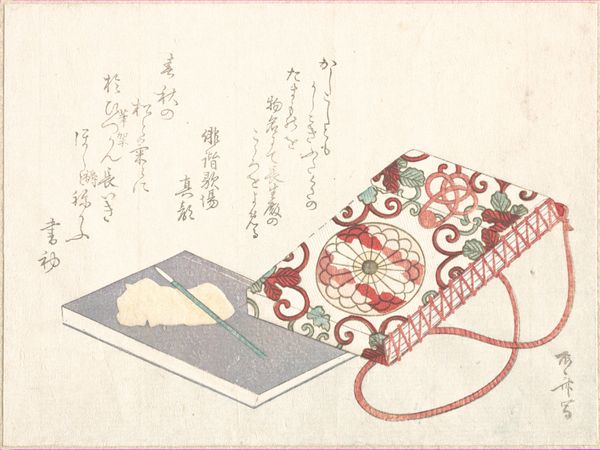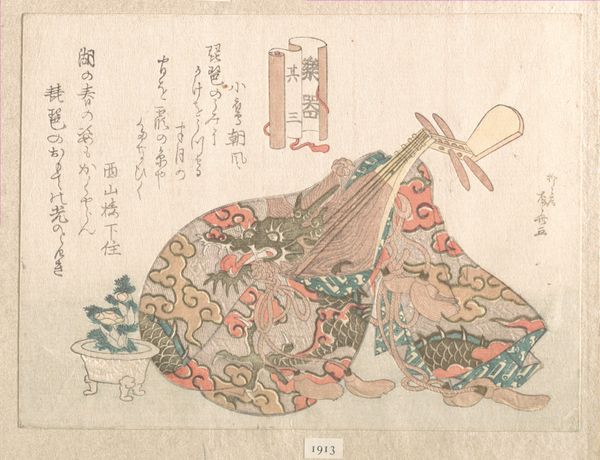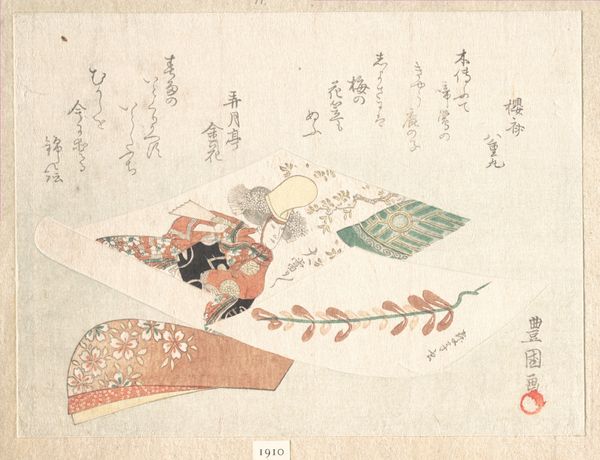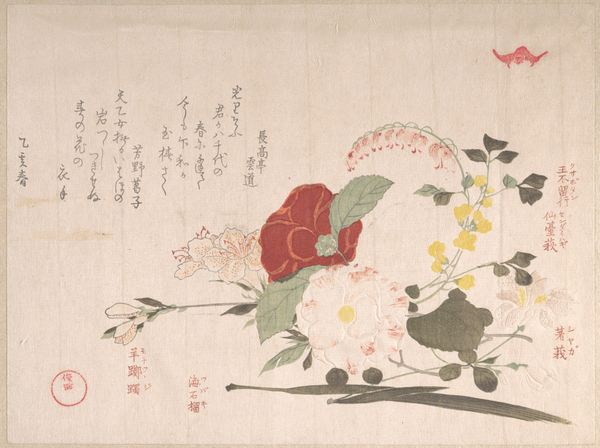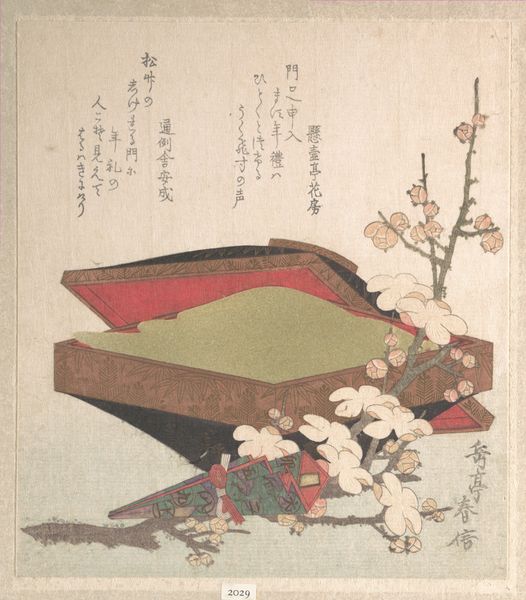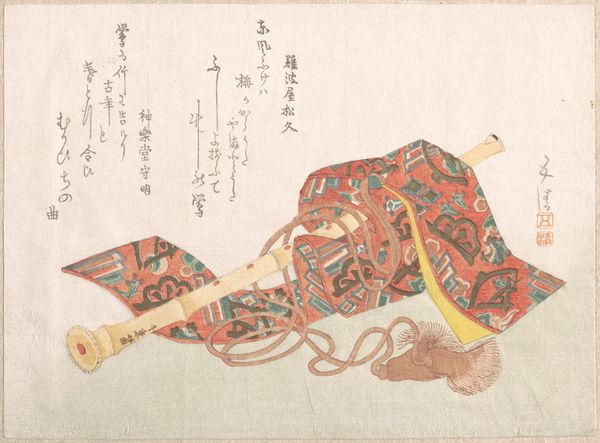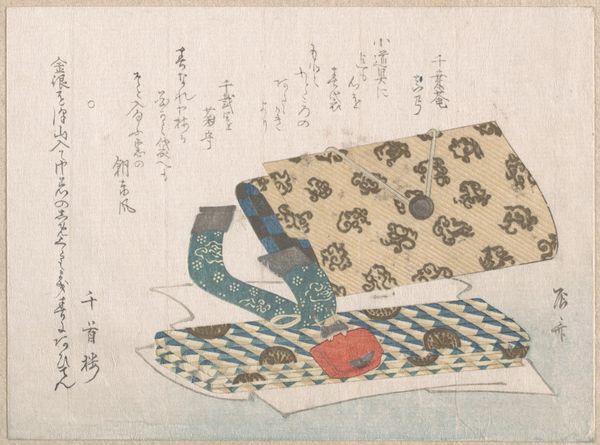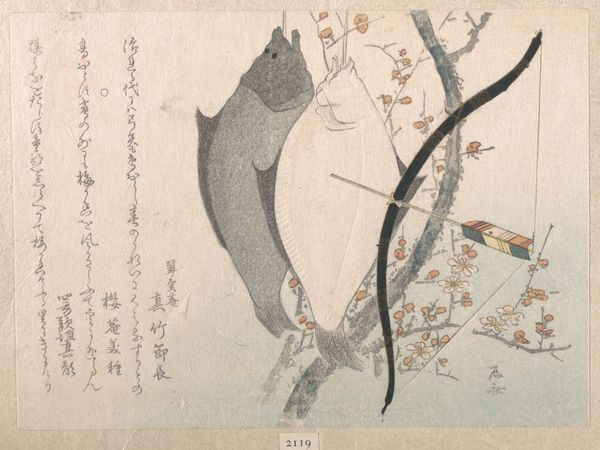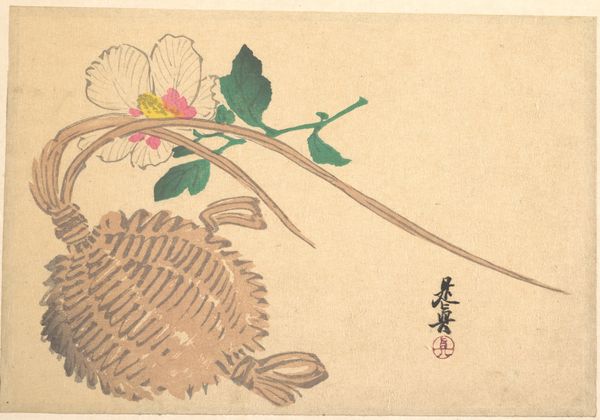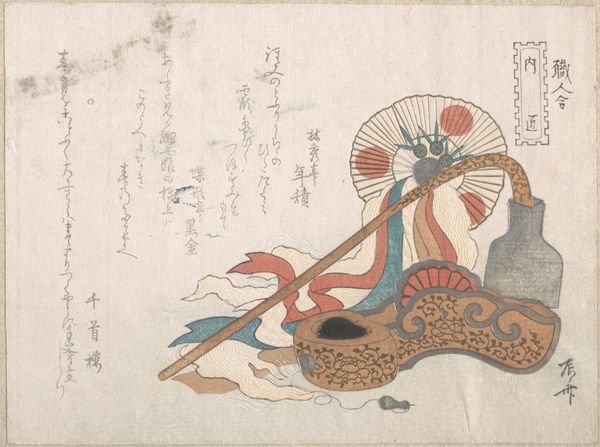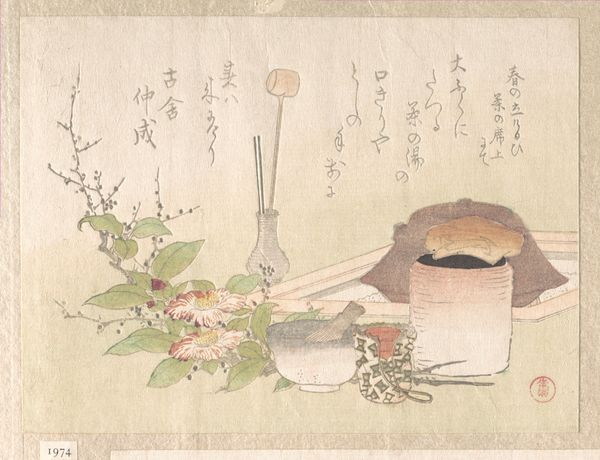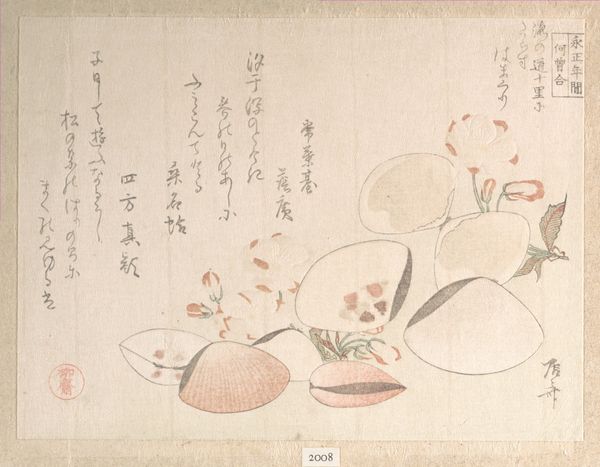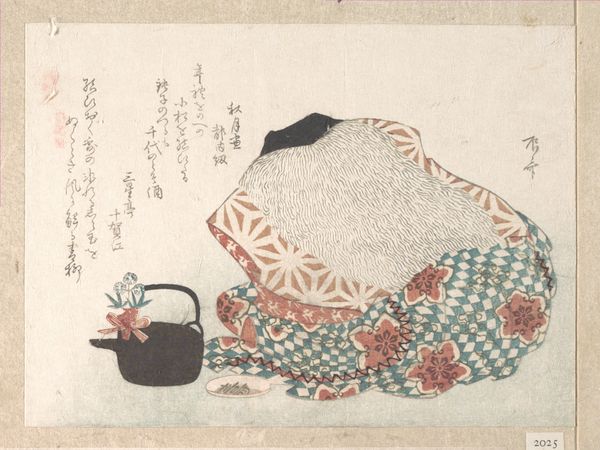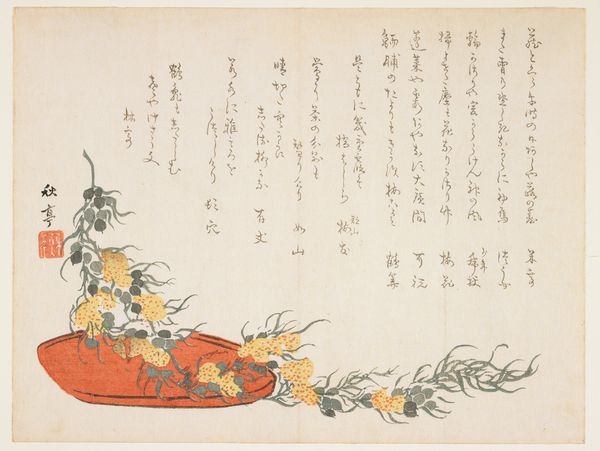
Shakuhachi, (a kind of bamboo flute), with Its Cover and Cherry Flowers 1800 - 1823
0:00
0:00
print, woodblock-print
# print
#
asian-art
#
ukiyo-e
#
woodblock-print
#
watercolor
Dimensions: 5 1/2 x 7 7/16 in. (14 x 18.9 cm)
Copyright: Public Domain
Ryūryūkyo Shinsai created this woodblock print of a shakuhachi flute, its cover, and cherry flowers in Japan in the early 19th century. It's a beautiful example of *ukiyo-e*, or "pictures of the floating world," a genre that often depicted scenes of everyday life and leisure. Shinsai’s print offers insights into the cultural values of the Edo period. The *shakuhachi* was not just a musical instrument; it was closely linked to Zen Buddhism and samurai culture. Cherry blossoms, or *sakura*, symbolize the fleeting nature of life, a common theme in Japanese art and philosophy. Note the calligraphy and the seals, which were integral parts of the print, adding layers of meaning and indicating the involvement of publishers and poetry circles in its creation. Understanding this artwork requires historical context, including knowledge of Japanese musical traditions, religious practices, and the social status of the artist and his patrons. Through careful research, we can gain a richer appreciation of Shinsai's print and its place within the broader cultural landscape of 19th-century Japan.
Comments
No comments
Be the first to comment and join the conversation on the ultimate creative platform.
